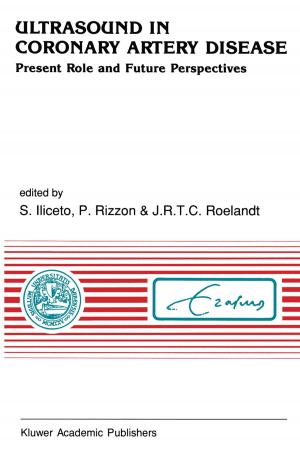Essential Physiology
Nonfiction, Health & Well Being, Medical, Specialties, Internal Medicine, General| Author: | D.F. Horrobin | ISBN: | 9789401023535 |
| Publisher: | Springer Netherlands | Publication: | December 6, 2012 |
| Imprint: | Springer | Language: | English |
| Author: | D.F. Horrobin |
| ISBN: | 9789401023535 |
| Publisher: | Springer Netherlands |
| Publication: | December 6, 2012 |
| Imprint: | Springer |
| Language: | English |
Physiology is the study of the normal working of the body. It is essential that its principles should be understood by nurses and doctors, for only if you know how the body works normally can you understand what is happening during disease. This first chapter covers the whole of physiology in outline, so that as later you read the chapters devoted to giving details of the various systems, you will be able to see where each system fits into the scheme of things. THE CELL You can learn a great deal about physiology by considering the requirements of a simple, single-celled organism such as the amoeba. These requirements may be summarized as follows: 1. Supplies. All living organisms require a supply of energy if they are to survive. Plants can obtain their energy directly from the sun and by using very simple inorganic materials they can manu facture all the substances they need. But animals must obtain their energy from the complex materials which they take in as food. The energy is released by the process known as oxidation (burning), in which food is broken down and combined with oxygen to release all the energy which is required. Animals therefore obviously need a supply of food and a supply of oxygen. Since the animal body is largely made up of water, they need a supply of water as well. The amoeba finds it easy to obtain all these materials from the water which surrounds it.
Physiology is the study of the normal working of the body. It is essential that its principles should be understood by nurses and doctors, for only if you know how the body works normally can you understand what is happening during disease. This first chapter covers the whole of physiology in outline, so that as later you read the chapters devoted to giving details of the various systems, you will be able to see where each system fits into the scheme of things. THE CELL You can learn a great deal about physiology by considering the requirements of a simple, single-celled organism such as the amoeba. These requirements may be summarized as follows: 1. Supplies. All living organisms require a supply of energy if they are to survive. Plants can obtain their energy directly from the sun and by using very simple inorganic materials they can manu facture all the substances they need. But animals must obtain their energy from the complex materials which they take in as food. The energy is released by the process known as oxidation (burning), in which food is broken down and combined with oxygen to release all the energy which is required. Animals therefore obviously need a supply of food and a supply of oxygen. Since the animal body is largely made up of water, they need a supply of water as well. The amoeba finds it easy to obtain all these materials from the water which surrounds it.















